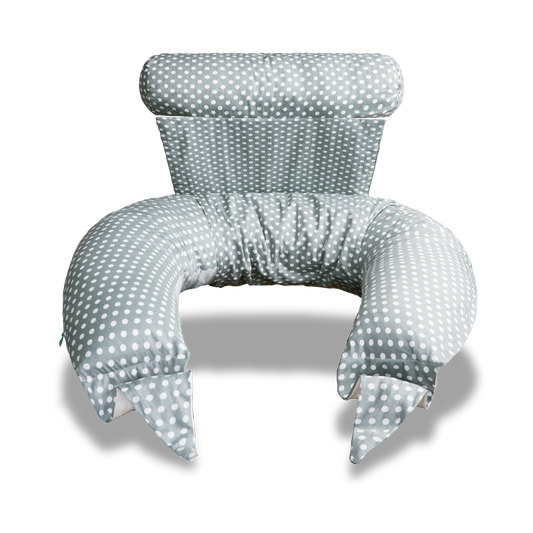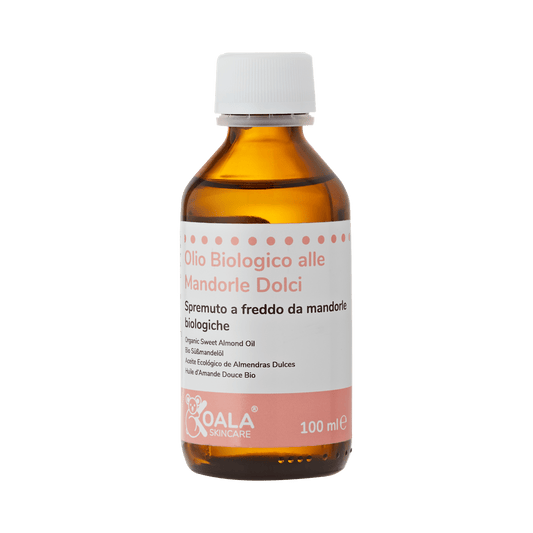One question we often ask ourselves after giving birth is: "Will my pre-pregnancy tummy come back?". We feel out of shape and can see how much our body has changed following the pregnancy. Remember, it’s important to give both you and your body time to recover, your body has just grown a new human! There are a few things we can do to help tone up our post
How long does it take to lose your post pregnancy belly?
Do you feel as if your tummy is "ruined" after giving birth, still swollen, soft, flabby, and even a little numb, as if you can't feel your muscles properly? Don't worry, this is completely normal!
Bear in mind how much it grew throughout pregnancy, tissues and muscles have been stretched to the maximum, and now they need time to recover and regain their pre-pregnancy tone.
Your womb has also undergone an enormous change and needs time to recover, during the last few weeks of pregnancy it weighed almost a kilo, a week after giving birth the weight decreases by 50%, and after about six weeks it returns to its original weight of 100 grams. This is why we experience "after pains" (contractions you feel in your womb after giving birth as it returns to your original shape).
If you notice a dark line (known as Linea Nigra) on your belly, don't worry, this too is totally normal and is due to abdomen muscles stretching and separating to allow the foetus to grow. As the muscles return to normal, the Linea Nigra will gradually disappear – usually within a few weeks.
We have also probably gained some excess belly fat, which will slowly start to be burnt off by breastfeeding and physical activity (however, you should wait a few weeks after giving birth before taking up sport again).
First and foremost, it’s important to give your body time to recover from childbirth and the huge change it has gone through. Patient is key: it will take at least six months for your body to return to its pre-pregnancy shape.
Everyone is different
"Why do my friends seem to bounce back into shape after just a few weeks, and I still can’t see much improvement after months?"
The reason is simple - everyone is different. Just in the same way that no two mums’ lives are the same.
Getting back into shape after a baby depends on various factors: our genes, our age, the number of pregnancies we’ve had, how much weight we gained during pregnancy, our pre-pregnancy body shape, whether or not we did regular physical activity whilst expecting and before and after pregnancy.
It’s important to be kind to ourselves and our bodies, which have grown, nurtured, and given birth to a new precious life. No need to worry, though, as by following our tips below, you will soon be back in shape.
5 tips for a flat tummy after pregnancy
Your pre and post pregnancy belly: Do they seem two different worlds and as if your belly will never be same again? Not to worry – here’s our guide on what you can do…
1. Give your body time
First and foremost, learn to love your body just as it is. It has just given you the most precious of gifts: it has grown a new life inside of you and now deserves a rest. Time and patience are key, getting your pre-pregnancy body back is not something that happens overnight.
2. Go for a daily walk
Going out for a walk with your baby every day is good for you: you can enjoy some fresh air, kickstart your metabolism and start losing weight. We recommend using a baby carrier - it's much more practical and comfortable than a pram!
3. Exercises to target abdominal muscles
Six weeks after giving birth, you can start doing some abdominal exercises, such as crunches and planks. We know that with a newborn, a trip to the gym may be just a dream, but you can easily do them at home by following a few online tutorials.
4. A good firming and elasticising cream
Massaging your tummy with a good moisturising cream will help restore elasticity to your skin. You can use the same one you used during pregnancy, such as Koala Skincare Elasticising Firming Body Cream. We recommend using it in conjunction with Organic Almond Oil, which has both elasticising and repairing properties.
5. Eat a balanced diet
Particularly if you’re breastfeeding, a healthy balanced diet is highly recommended. It will help you get back into shape by supporting you and your baby with all the nutrients you need: plenty of vegetables, fibre, protein, and good hydration intake, which will allow you to expel excess fluids. Dieting while breastfeeding is extremely unadvised.
Post C-section belly
We tend to think that after a caesarean section, it will take longer for your belly to return back to its former shape. In reality, however, the operation causes less damage to abdominal muscles than we may imagine.
The most important thing to do is to give the tissues time to heal. After a few weeks you can start doing some abdominal exercises.
Wearing a postpartum belly support wrap during the first few days after the birth will help reduce any pain, allow you to move around easier and aid muscle recovery.
Diastasis Rectus Abdominis
You should always have a postnatal assessment from your Doctor (in UK, the 6-8 week postnatal check is essential routine care and conducted by your GP). This is important especially if you have any urinary or vaginal discomfort which may indicate pelvic floor dysfunction, or if you feel that your tummy is struggling to return back to normal.
A problem which can occur after childbirth is Diastasis Rectus Abdominis: this is when muscles do not recover their tone and the tummy area appears soft and loose.
What does it depend on? There are two muscles in the abdomen, the right rectus abdominis and the left rectus abdominis, which support and protect all the organs in the abdomen area. They are separated from each other by an elastic tissue, called the Linea Alba. During pregnancy the Linea Alba widens to allow the uterus room to grow.
It normally returns to its original size in a couple of months, but if it doesn't, you may have Diastasis Rectus Abdominis.
It is not only a cosmetic issue but also a health one, as it can lead to pain in the abdomen and back areas, and the risk of developing an abdominal hernia. This is why you should always seek advice from your Doctor and attend your postnatal check.
We recommend that you consult your doctor if you have any questions or for your postnatal health check. Taking good care of yourself is even more important now that you have a little one to look after.
The information contained in this Site is for informational purposes only and in no way replaces a diagnosis or treatment plan by a Doctor. You should always seek advice from your doctor and/or medical specialists.








